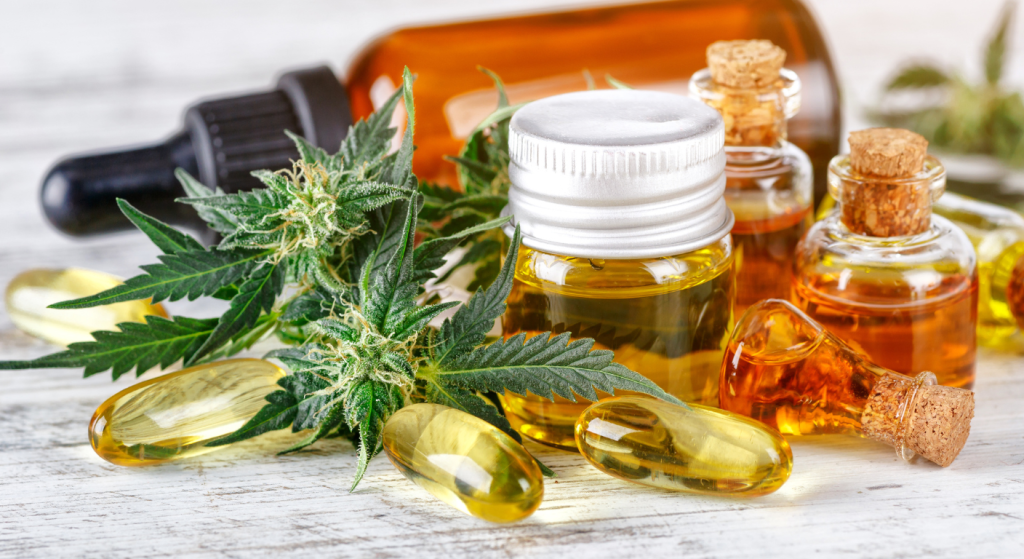Cannabis has evolved from being viewed as a taboo substance to a recognized plant with both medical and recreational uses. Today, millions of people across the U.S. use marijuana either for medical reasons or personal enjoyment. However, while both come from the same Cannabis sativa plant, their uses, legal status, and regulations differ significantly. Understanding the distinction between medical marijuana vs recreational use helps individuals make informed and safe choices. Those seeking pain relief or treatment for anxiety may benefit from medical cannabis, while others may use it recreationally for relaxation or creativity.
This article explores their key differences, benefits, forms, and laws, supported by findings from recent medical marijuana research. We’ll also discuss the benefits of medical marijuanas card, licensing facts, and important legal considerations.
What Is Medical Marijuana?

Medical marijuana refers to cannabis that’s prescribed by licensed healthcare providers to help relieve or manage specific health conditions. It contains active compounds called cannabinoids, primarily THC (tetrahydrocannabinol) and CBD (cannabidiol). These compounds interact with the body’s endocannabinoid system to reduce symptoms such as chronic pain, nausea, epilepsy, anxiety, and muscle spasms.
According to a medical cannabis study, cannabis may help patients suffering from cancer pain, arthritis, multiple sclerosis, and PTSD. However, these studies also emphasize that more long-term research is still needed to confirm the full range of therapeutic effects.
Patients typically need a doctor’s certification and a medical marijuana card to access licensed dispensaries. This ensures that usage and dosage are monitored safely under medical supervision.
What Does a Medical Marijuana Card Do?
A medical marijuana card serves as an official state-issued document that allows qualified patients to legally purchase and use medical cannabis. It offers numerous advantages, commonly referred to as benefits of medical marijuanas card, including:
- Legal protection from prosecution for possession within allowed limits.
- Access to a wider range of medical-grade cannabis products.
- Exemptions or discounts on taxes compared to recreational purchases.
- Eligibility for higher potency or dosage products suited to medical needs.
For example, Illinois medical marijuanas card benefits include access to licensed dispensaries and reduced state taxes. Patients with qualifying conditions can possess more cannabis than recreational users and buy specialized medical strains tailored for symptom relief.
These cannabis card benefits make it easier for patients to access consistent, reliable treatment while staying compliant with state laws.
How Medical Cannabis Is Administered
Medical marijuana is available in various forms of marijuana, each designed for different health conditions and personal preferences. Patients can choose from:
- Oils and tinctures – provide precise dosing and fast absorption.
- Edibles – infused food products that offer long-lasting effects.
- Vapes – inhaled forms for quick symptom relief.
- Capsules and tablets – easy to take and dose consistently.
- Topicals and creams – used for localized pain and inflammation relief.
These medical cannabis forms provide flexibility for patients who prefer not to smoke. The different forms of marijuana allow doctors to personalize treatment based on the condition and desired effect.
When comparing forms of medical marijuanas, each type offers unique benefits and onset times, allowing patients to find what works best for them.
What Is Recreational Marijuana?

Recreational marijuana is used for enjoyment, relaxation, or social purposes rather than for medical treatment. It contains THC as the primary psychoactive compound responsible for producing euphoria or a “high.”
While both medical and recreational marijuana come from the same plant, the intent of use, legal requirements, and chemical ratios often differ. Research suggests that recreational marijuana typically has higher THC concentrations, whereas medical strains often have more CBD, which has non-intoxicating therapeutic effects.
Recreational cannabis is legally available in many U.S. states for adults aged 21 and older, but possession limits, taxation, and purchasing regulations vary. The main goal of recreational use is enjoyment, promoting creativity, social interaction, or stress relief, rather than symptom management.
Medical Marijuana vs Recreational: Key Differences Explained
Medical marijuana vs recreational refers to the clear distinctions between how, why, and under what regulations cannabis is used.
Here’s a simplified comparison:
| Aspect | Medical Marijuana | Recreational Marijuana |
|---|---|---|
| Purpose | Used to relieve medical symptoms and support treatment plans | Used for relaxation, creativity, and personal enjoyment |
| Access | Requires a doctor’s certification and medical cannabis card | Legally available to adults (21+) in certain states |
| THC/CBD Ratio | Often higher in CBD, lower THC for mild effects | Typically higher in THC for stronger psychoactive impact |
| Price & Taxes | Often lower taxes or tax exemptions | Includes full retail and excise taxes |
| Regulation | Heavily monitored through medical programs | Licensed under general recreational laws |
| Product Range | Medical-grade, tested for safety | Wider variety but less potency control |
Laws are subject to change. Consult your state’s official resources for current requirements.
While both medical and recreational marijuana come from the same cannabis plant, they often produce different effects because of how products are formulated and sold for each purpose.
Medical Marijuana Typically Contains More CBD
Medical marijuana usually has higher levels of CBD (cannabidiol) and lower levels of THC. CBD-rich strains don’t create the strong “high” linked with THC, making them ideal for people who want symptom relief from chronic pain, anxiety, or inflammation without intense psychoactive effects. These balanced or CBD-dominant products are preferred in medical dispensaries for their therapeutic properties and milder impact.
Recreational Marijuana Typically Contains More THC
Recreational marijuana, on the other hand, generally contains higher levels of THC, the compound responsible for the euphoric “high.” THC-dominant strains are often chosen by recreational users for relaxation, creativity, and enjoyment. However, these strains can also be used medically to help with pain relief or sleep, depending on the dosage and user preference.
The Legal Landscape in the U.S. (2026)
As of 2026, over 40 states have legalized medical marijuana, while 24 states and Washington D.C. have approved recreational cannabis. However, cannabis remains illegal under federal law, meaning regulations vary widely by state.
States like California, Illinois, and Colorado allow both uses, while others permit only medical use with strict licensing. Always check your state’s Department of Health or Cannabis Control Board for current medical marijuana law before purchasing or possessing marijuana.
Licensing and Compliance
According to research, the licensing process for medical dispensaries differs from recreational ones.
- Medical dispensaries require healthcare partnerships and medical certifications.
- Recreational stores operate under retail or commercial licensing.
Medical programs often include stricter quality testing, record-keeping, and product tracking to ensure patient safety. Recreational facilities, although regulated, focus more on consumer access and age verification.
Benefits of Having a Medical Marijuana Card
Holding a medical marijuana card provides numerous cannabis card benefits that go beyond simple access. These include:
- Better Quality and Product Safety
Products sold under medical programs are tested for purity, potency, and contaminants, ensuring safer usage. - Cost Savings and Tax Exemptions
Medical patients often pay less because medical marijuana card benefits can include tax reductions or discounts from dispensaries. - Higher Possession Limits
In some states, medical users can buy and possess more cannabis than recreational users. - Legal Protections
Patients with a card are protected under state medical laws from certain legal penalties. - Access to Specialized Strains
Some medical-only strains offer higher CBD content for chronic pain or anxiety management.
Medical marijuana research indicates that cannabis may assist with conditions like arthritis, epilepsy, anxiety disorders, chronic pain, and inflammation, chemotherapy-related nausea, and multiple other qualifying medical conditions that vary state by state. While these findings are promising, experts stress the importance of using cannabis under medical guidance.
Pros and Cons of Medical Cannabis
Pros of Medical Cannabis
- May relieve chronic pain and inflammation.
- Can support sleep and appetite in patients undergoing cancer treatment.
- Provides an alternative to opioids or sedatives.
- Legal and monitored through certified dispensaries.
- Offers personalized treatment options.
Cons of Medical Cannabis
- Possible side effects such as dizziness, dry mouth, or dependency.
- Limited large-scale research due to federal restrictions.
- Varied legality and costs between states.
- Ongoing renewal fees for medical cards.
When considering the pros and cons of medical cannabis, it’s important to consult a licensed provider to ensure proper dosage and minimize risks.
Forms of Cannabis: How Do They Differ?
Cannabis is available in various forms of weed, each offering distinct benefits and effects. The main forms of marijuana include:
- Smoking and Vaping – Fast relief but shorter duration.
- Edibles – Longer-lasting effects but slower onset.
- Oils and Tinctures – Controlled dosing for chronic symptoms.
- Topicals – Localized relief without psychoactive effects.
- Capsules and Sprays – Easy and discreet for medical users.
Understanding forms of medical marijuanas helps patients and users choose what works best for their body and condition. Using medical cannabis forms with doctor guidance ensures safe and effective symptom management.
Medical Cannabis Research and Ongoing Studies
Over recent years, medical marijuana research has grown significantly. Researchers are beginning to understand how cannabinoids (like THC and CBD) may help manage symptoms, while also exploring the safety, dosing, and long-term effects. Below are key findings and what they mean for you.
Evidence from Recent Reviews
A Review published noted that the landscape of medical cannabis is evolving, with “scientific advancements, public perception and regulatory frameworks” influencing how we understand therapeutic use. This review pointed out that although many compounds (over 500) exist in the cannabis plant, most research still focuses on THC and CBD.
Key Research Findings
- Pain and sleep: The review suggests that THC may reduce pain and improve sleep in chronic pain patients, and that CBD also may help with pain, albeit to a lesser degree.
- Product potency and content: A study found wide variation in THC and CBD levels in cannabis products available on dispensary websites in legal states. Some medical products had THC levels over 35%.
- Treatment preferences and dosing: The same mapping review found that many medical patients prefer lower-THC/higher-CBD products, but others choose higher-THC formulations depending on their condition.
Emerging Concepts: Entourage Effect
The idea of the “entourage effect” proposes that lesser-known compounds in the cannabis plant (terpenes, flavonoids) work together with THC and CBD to enhance therapeutic effects. While this idea is popular, the evidence remains mixed and the effect is still debated.
What This Means for You
- Research suggests that medical cannabis may help with chronic pain, some sleep issues, and seizure control, particularly when other treatments have failed.
- Product potency and cannabinoid ratios (THC vs CBD) matter. Higher THC does not always mean better results, and may increase side-effects.
- More clinical trials are still needed, especially long-term studies comparing different dosing forms, conditions, and populations.
Safety and Ongoing Considerations
Always start low, go slow: If you are considering medical cannabis, you should work with a licensed professional, monitor symptoms, and adjust dose/form under supervision.
Because cannabis remains federally controlled (in the U.S.), research has been historically limited, leading to gaps in high-quality evidence.
Potency in modern cannabis products has increased; some medical and recreational products have very high THC levels, which may raise risks of side-effects.
Final Thoughts
While both forms of cannabis come from the same plant, medical marijuana vs recreational differs in purpose, regulation, and access. Medical users benefit from doctor-guided treatment, consistent quality, and legal protection through medical cannabis cards, while recreational users enjoy regulated freedom where laws permit.
Responsible and informed use remains key. Whether for health or leisure, always check your state laws and consult a qualified professional.
If you’re considering medical cannabis, learn how to apply for your card through LeafyRX to start safely and legally.
What are some rules about recreational use?
Rules vary widely by state (or country), but typical rules for recreational cannabis include:
Age requirement: Most U.S. states require the user to be 21 or older.
Purchase limits: There are limits on how much you can buy or carry. For example, in Connecticut, adult-use may allow 1 ounce per transaction vs medical program 5 ounces/month.
Taxation: Recreational use often carries full retail taxes and additional excise taxes.
Where you can use it: Many states restrict where cannabis can be consumed (often not in public places, vehicles, etc.).
Product potency / labelling requirements: States may regulate maximum THC levels, product testing requirements, and labelling standards.
Because rules change, always check your specific state’s current legal resources. “Laws are subject to change. Consult your state’s official resources for current requirements.”
How is medical marijuana used?
Medical marijuana can be used in various ways, depending on the condition, dosing requirements, and form. Common methods include:
Inhalation (smoking/vaporizing) for rapid onset.
Oral ingestion (tinctures, capsules, edibles) for longer-lasting effects.
Topical applications (creams, balms) for localized relief without strong psychoactive effects.
Physicians guide dosing, monitor effects, and advise on strain selection (THC vs CBD ratio) under a medical-use program. For example, therapeutics show that oral cannabinoids may help with chemotherapy-induced nausea and chronic pain.
Which is stronger, medical or recreational marijuana?
Strength in this context often means THC potency and its psychoactive effect. Research shows that in many markets, the average THC concentration in medical-program products is not substantially lower than in recreational ones. For example, a U.S. study found average THC ~19.2% in medical programs versus ~21.5% in recreational programs.
Therefore, it cannot be assumed that recreational products are always stronger or that medical ones are weaker. Strength depends on the product, the THC and CBD levels, and how it’s used. If you are using cannabis for medical reasons, strength (THC) is only one part of safe use; ratio, dosage, and supervision matter.
Is Medical Marijuana Better Quality?
Yes, medical marijuana is generally better quality because it’s grown, processed, and tested under strict state regulations. Each batch must pass lab tests for purity, potency, and safety, ensuring it’s free from pesticides, mold, and heavy metals. While it can be more expensive than street or recreational marijuana, this higher cost reflects the rigorous quality control and compliance standards required by law. Medical marijuana also offers more consistent THC and CBD levels, giving patients reliable results for symptom management.














